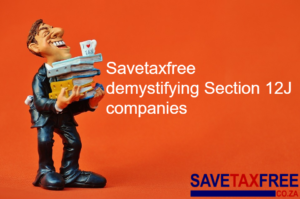In volatile environments, investors urged to look beyond the yield
Related Articles
12 October 2016
In an uncertain investment environment, where capital growth is hard to find, investors are taking yield more seriously than ever. However, when it comes to comparing investments, investors should be careful of misinterpreting or focusing only on yield.
This is according to Sean Segar, Head of Nedgroup Investments Cash Solutions, who says particularly in volatile environments, many investors do not consider the relationship between yield and risk.
 “The fact is that higher yield comes with higher risk. The financial markets ensure that yields are a very good indicator of risk. Furthermore, the many professional money managers and treasurers operating in financial markets make these markets efficient. It is therefore highly unlikely that individual investors or their financial advisors will come across an investment that offers a superior yield at a low risk – because, if such an opportunity did exist it would very quickly be priced to market by the professionals,” he warns.
“The fact is that higher yield comes with higher risk. The financial markets ensure that yields are a very good indicator of risk. Furthermore, the many professional money managers and treasurers operating in financial markets make these markets efficient. It is therefore highly unlikely that individual investors or their financial advisors will come across an investment that offers a superior yield at a low risk – because, if such an opportunity did exist it would very quickly be priced to market by the professionals,” he warns.
Segar also urges investors to ensure that when they are comparing investments, they are comparing like-for-like figures across products. This means making sure one is looking at: net yield versus net yield and not gross yield; nominal yield compared to nominal yield and not effective yield; high credit quality compared to high credit quality and not low credit quality; and differentiating between liquid deposits versus fixed deposits. “These issues are easy for the average investor to confuse, and can lead to inaccurate comparisons,” says Segar.
“In cricketing terms – go for the singles!” says Segar, explaining his philosophy that investors should focus rather on avoiding losers than trying to pick winners when selecting interest bearing investment products.
“Sophisticated investors with all the relevant information to hand can undertake an assessment to determine if additional risk can be absorbed, and if the additional yield is adequate to compensate them for the additional risk. Ultimately the risk adjusted return must be understood and be acceptable to the investor.”
The individual circumstances and investment requirements of the investor are also very important to take into account when looking at yield and risk comparisons. “If retaining security and flexibility is a requirement, then it’s important to carefully assess the terms of the products available. Products offering the best rates will come with higher risk associated with a second-tier bank, or the terms could impose penalties for withdrawing funds early,” says Segar.
For someone who is happy to take on the additional risk for the higher rate, or who does not require access to the funds because they do not expect their financial situation to change, then a product with a higher yield, but greater risk and/or lower liquidity, is a viable option. However, for investors who need to limit their risk and retain access to their cash while it is invested, then it’s likely that they would look at a slightly lower yield product backed by an established institution, with easy access to it should they wish to take advantage of a sudden opportunity.
Segar points specifically to Money Market Funds as a good example of this trade-off. “The attraction of the money market fund is the relatively low risk, better than cash returns but easy access to funds. Money market funds, unlike bank call deposits, can and do make use of longer dated instruments and in some cases credit to achieve better than cash returns,” he says.
“And, unlike the fixed deposit, they offer immediate access. This doesn’t mean they should be used as a bank account, but they are suitable as a parking bay for cash, as a building block in a portfolio or as a separate low risk investment asset class,” he explains.
A fixed income investor on the other hand needs to understand the guidelines the manager uses when investing as well as the risk associated with potentially higher yield. These include liquidity, credit and interest rate risk.
“The important thing to remember is to have a clear idea of what one’s investment requirements and risk profile are before comparing yield investment options and then – when making the comparison, to ensure that it is an accurate one,” says Segar.






